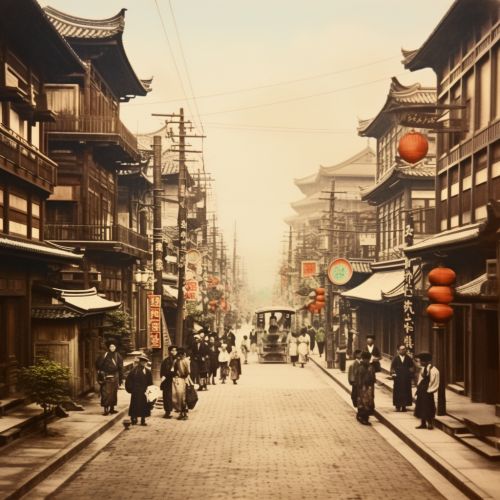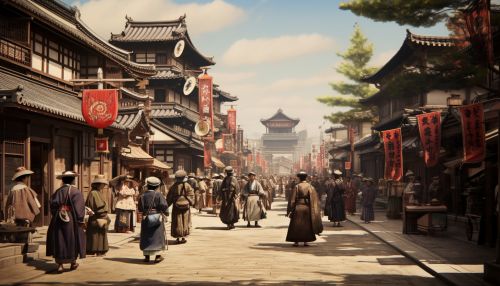Meiji Restoration
Background
The Meiji Restoration was a significant event in Japanese history that marked the end of the Tokugawa shogunate and the beginning of the Meiji era. This period, which spanned from 1868 to 1912, saw Japan transform from an isolated feudal society into a modern industrialized nation state.
Causes
The causes of the Meiji Restoration are multifaceted and complex. One of the primary factors was the increasing pressure from Western powers, particularly the United States, to open Japan to international trade. This was exemplified by the arrival of Commodore Matthew Perry and his "Black Ships" in 1853, which led to the signing of the Treaty of Kanagawa in 1854.


The Tokugawa shogunate's inability to effectively manage the country and its economy also contributed to the unrest. The shogunate had implemented a policy of sakoku or national seclusion, which severely limited Japan's interactions with the outside world. This policy, coupled with the shogunate's rigid class system and outdated agricultural practices, led to widespread dissatisfaction among the samurai class and the peasantry.
Events
The Meiji Restoration was not a single event, but a series of events that culminated in the restoration of imperial rule. The first of these was the Ansei Purge, a political purge carried out by the shogunate in the late 1850s to suppress opposition to its policies. This was followed by the Coup of 1866, in which samurai from the Satsuma and Choshu domains overthrew the shogunate and installed Emperor Meiji as the ruler of Japan.
The Boshin War (1868-1869) was a civil war fought between the forces of the shogunate and those supporting the emperor. The war ended with the defeat of the shogunate and the establishment of a new government under Emperor Meiji.
Reforms
The Meiji government implemented a series of reforms aimed at modernizing Japan and making it competitive with Western powers. These included the Charter Oath, a five-point statement that outlined the new government's policies, and the Meiji Constitution, which established a constitutional monarchy.
The government also embarked on a program of industrialization, building railways, factories, and shipyards. The Land Tax Reform of 1873 replaced the traditional rice tax with a monetary tax, which helped to stimulate the economy and promote the growth of a capitalist market.
Impact
The impact of the Meiji Restoration was profound and far-reaching. It transformed Japan from a feudal society into a modern nation state, with a strong central government, a modern economy, and a powerful military. It also led to the westernization of Japanese society, with Western-style buildings, clothing, and customs becoming increasingly common.
The Meiji Restoration also had significant implications for Japan's relations with the rest of the world. It marked the end of Japan's policy of national seclusion and opened the country to international trade and diplomacy.
Legacy
The legacy of the Meiji Restoration continues to be felt in Japan today. It is seen as the foundation of modern Japan and is often cited as a model for other countries seeking to modernize and industrialize.
